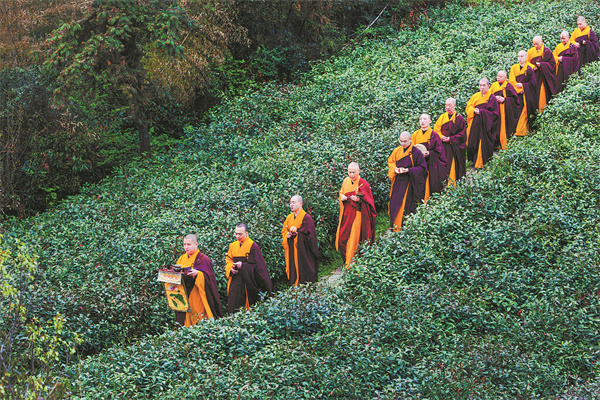

"What contrasts with facing a single object for two hours is the richness and nobility of the mind. Although the tea drinkers may live in a busy world, their minds are free and at ease. This state of mind is the most beautiful thing about the ceremony," Yanping adds.
The tea-making technique used at the ceremony is whisking — using a bamboo implement to mix the powder with hot water, a style prevalent in the Song Dynasty.
According to Yanping, Jingshan Temple has always been a platform for religious and cultural exchange, with monks from Japan and Korea coming to study at the temple from ancient times to today.
As early as the Tang Dynasty, a Japanese monk who studied at Jingshan Temple took tea drinking back to Japan, but in the Song Dynasty, two other influential monks, Enni Ben'en and Nanpo Shomyo, introduced the temple's tea traditions to Japan. This was the origin of Japan's tea ceremony known as Sado.
The ceremony is still held regularly at the temple, 18 of which each year are open to the public. Each ceremony can host up to 60 attendees.